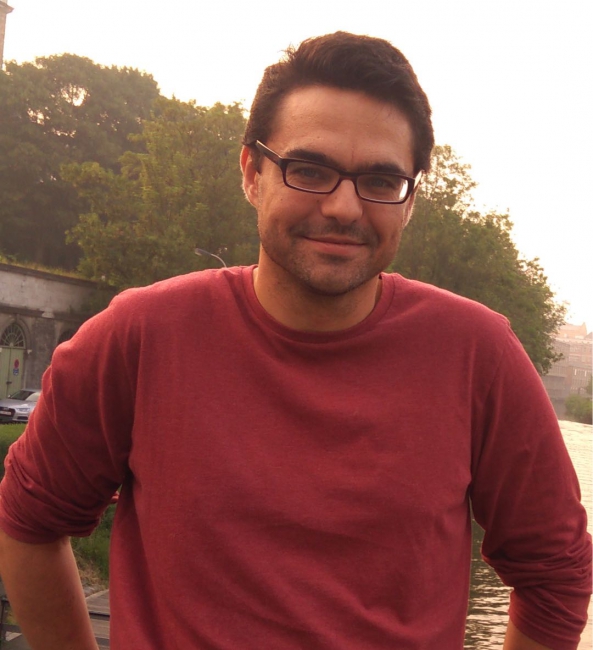Modelling of composite materials at Ghent University: from micro- to macro-scale, from reinforced polymers to cementitious materials

主讲人:Francisco A. Gilabert
邀请人:朱兴一 教授
时间:2018年6月11日(周一)9:00—10:30
地点:交通运输工程学院103会议室
主讲人简介:
Dr. Francisco A. Gilabert is professor in the Mechanics of Materials and Structures research group at Ghent University (Belgium). He obtained his PhD in Fundamental Physics at University of Seville (Spain) in 2007. He has 11 years’ experience in the field of computational mechanics developing simulation models of composites, ceramics, concrete and granular materials. He has performed an active research on the modelling and the experimental characterization of encapsulation-based self-healing materials, with particular focus on the study of glass-cementitious interfaces as well as fracture and debonding mechanisms. Currently he is actively involved in material modelling developments that incorporate both isotropic and orthotropic visco-elasto-plastic-damage features. In the last five years, he has published 17 journal papers in peer-reviewed ISI journals and more than 20 conference proceedings. Recently he joined the steering committee of the network DuraBUILDmaterials at UGent that facilitates collaborative application-oriented research, technology development and transfer of original research results in the construction sector.
主讲内容简介:
In combination with experimental labors, nowadays computer simulations allow us a better understanding of complex phenomena and facilitate the identification of the key points to simplify and improve the design of a wide variety of materials and structures. In that direction, this lecture is composed of three parts.
First, the presenter will give a general overview of the current research activities carried out in the Mechanics of Materials and Structures research group of Ghent University (MMS-UGent).
Secondly, a more detailed description of the modelling activities of the presenter will be described, ranging from computational mechanics of composite materials, fracture mechanics, granular materials and fluid dynamics. In that sense, the fundamental concepts of the so-called multiscale modelling approach will be explained. Likewise, the potentialities of how this approach can be virtually applied to any kind of composite-based materials (e.g., fiber-reinforced plastics, concrete or ceramics) will be discussed. The connection with the experimental tests required to obtain reliable models will also be presented as well as the current limitations and further improvements.
Finally, the last and wider block will cover how the adequate combination of some of the aforementioned modelling capabilities can be effectively used. In particular, the presenter will show how techniques like the eXtended Finite Element Method (XFEM), the Cohesive Zone Models (CZM) and the Computational Fluid Dynamics (CFD) can help assess and improve the encapsulation-based self-healing strategy that is currently being applied in cementitious and polymer-based materials. An encapsulation-based material is produced introducing some small healing fluid-filled capsules in a matrix. These materials can self-heal when internal cracks intercept and break the capsules. If the healing agent is released, the crack can be sealed. However, this is not always the case. The presenter will show how the adequate combined experimental-numerical research is required to assess the reliability of this encapsulation-based healing technique. Some illustrative cases will be presented, where we will see (i) the effect of the right combination of capsule geometry and capsule-matrix interface strength in this self-healing strategy (as the capsules will break at the right moment) and (ii) the outflow velocity and leakage pattern of the healing agent that is spread into the crack once this capsule is effectively broken.
欢迎各位老师、同学参加同路人学术论坛!
交通运输工程学院研究生会
交通运输工程学院青年教师沙龙